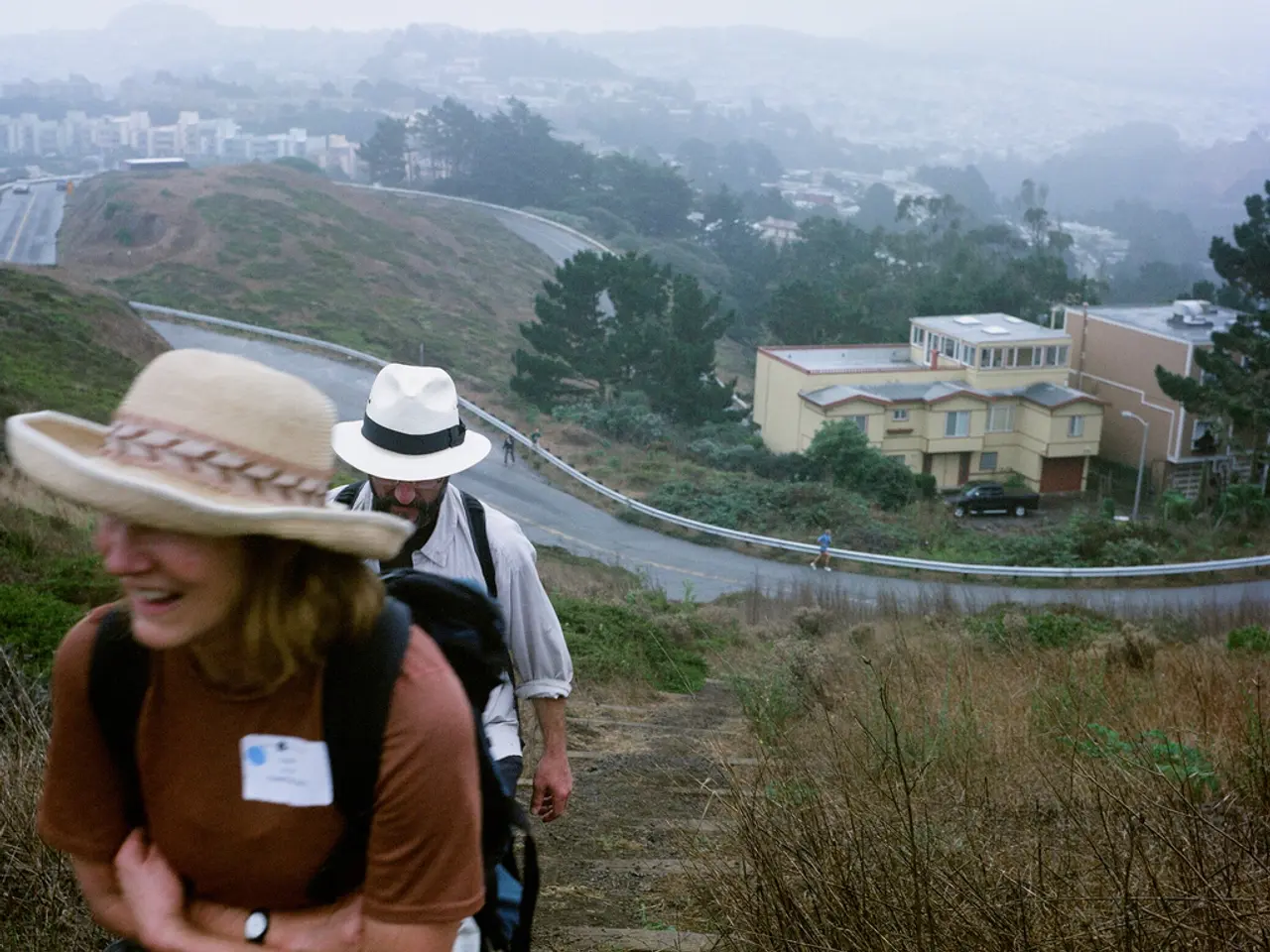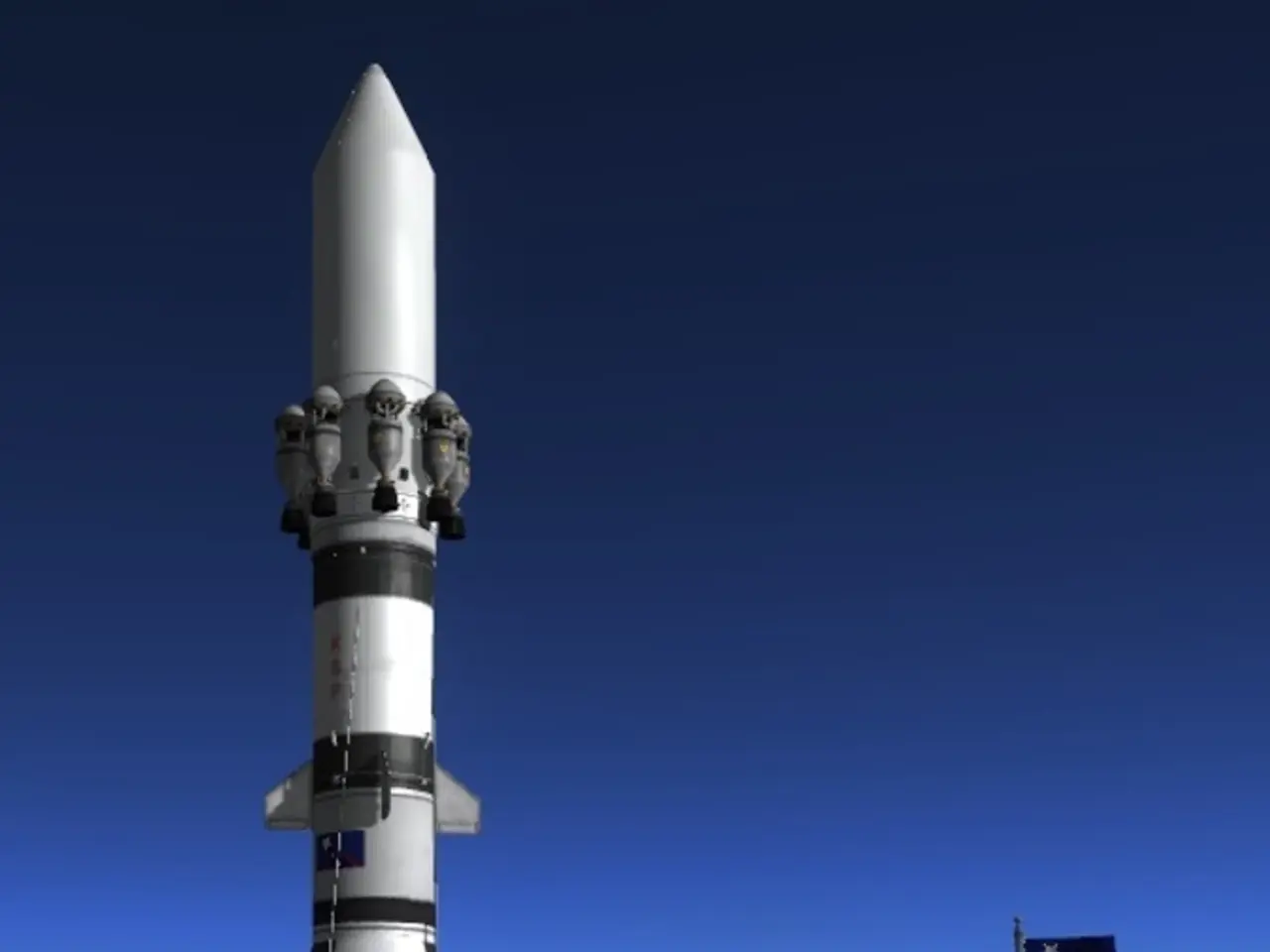Climate alterations' impact on mountain climbing
In the majestic Karakoram and Himalayan ranges, climate change is posing new challenges for mountaineers and local communities. The United Nations has warned that at least $200 billion (€185 billion) will be needed every year for post-disaster and reconstruction efforts in these regions.
The steep and challenging Laila Peak, located in the Karakoram, is a favourite among mountaineers. However, experienced German mountaineer David Göttler believes that in future, expeditions will have to get to Pakistan earlier due to climate change. This is because the changing weather patterns are causing reduced snowfall, higher freezing levels, accelerated glacier retreat, and increased rockfall hazards.
These changes lead to shorter snow seasons and less reliable snow coverage, which raises safety risks for climbers due to unstable ice and more frequent rockfalls. In the Karakoram, the 2025 climbing season on K2 has been marked by drought conditions and low spring snowfall combined with warmer-than-normal temperatures, intensifying rockfall dangers.
Glaciers in these high mountain regions are shrinking, exposing more bare ice and weakening glacier stability. This threatens the safety of mountaineers and affects the downstream water supply. In the small village of Passu, located in the Hindu Kush-Himalayan region, the village is at risk of flooding due to melting glaciers and expanding glacial lakes. An early warning system has been set up in Passu to protect residents from potential floods.
Climate change is also impacting the safety of local communities. In Chilas, located at 1265 meters above sea level on the southern edge of the Karakoram, the thermometer rose to a record 48.5 degrees Celsius (119 Fahrenheit) in July. Up to altitudes of over 5,500 meters, it rained instead of snowing, and there was not even a night frost in some places.
Last year, a glacial lake overflow destroyed farmland, swept away bridges and buildings, and killed an 11-year-old boy named Ali Mohammad in Chalt village. Nepal and Pakistan have repeatedly urged industrialized countries to take action to combat climate change, but their pleas have gone largely unheeded.
Tariq Jamil, who heads the UN-backed disaster risk management center in Hassanabad village, is working tirelessly to protect his community. Every summer, he and his team seek funds to extend their flood barrier and rebuild destroyed houses, and establish better mobile phone reception in the area. Despite the risks, Tariq Jamil's family is considering leaving their home due to the risk of flooding, but he prefers to stay and help boost flood defenses.
The north-west face of Laila Peak, which was previously covered in a thick layer of snow, now has only a thin layer of snow in some places and large areas of bare rock. This is a stark reminder of the rapid changes taking place in these regions. Göttler also notes that mountains are changing quickly, with objective dangers increasing and rockfall on the rise.
As the world grapples with the impacts of climate change, it is clear that the Karakoram and Himalayas are not immune. These evolving conditions require climbers and expedition operators to adapt to new safety challenges posed by a warming climate. The UN Secretary-General Antonio Guterres has warned about the dangers of melting glaciers and the resulting floods, particularly in the Everest region of Nepal. Extreme weather events, such as heavy rainfall and dam collapses at glacial lakes, are also increasing on the highest mountains due to climate change.
In conclusion, climate change not only shortens the window for safe climbing but also increases hazards like falling debris and unstable ice, making expeditions more dangerous in the Karakoram and Himalayan ranges. These evolving conditions require climbers and expedition operators to adapt to new safety challenges posed by a warming climate.
- The international media has been reporting on the challenges climate change poses for mountaineers in the Karakoram and Himalayan ranges.
- The changing climate has led to shortened snow seasons and increased safety risks for climbers in these regions, as seen in the Laila Peak's reduced snow coverage.
- Europe and Asia are not the only continents affected by climate change; it has impacted the safety of local communities in regions like Chilas, where the thermometer rose to record-breaking temperatures.
- In the realm of environmental science, melting glaciers pose a threat not only to mountaineers but also to downstream communities, as shown by the flooding risk in Passu and the destruction caused by a glacial lake overflow in Chalt village.
- Recent events, such as the destruction caused by a glacial lake overflow, highlight the importance of scientific advancements in mitigating the effects of climate change and the need for industrialized countries to take action, as urged by countries like Nepal and Pakistan.







